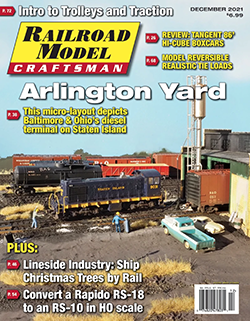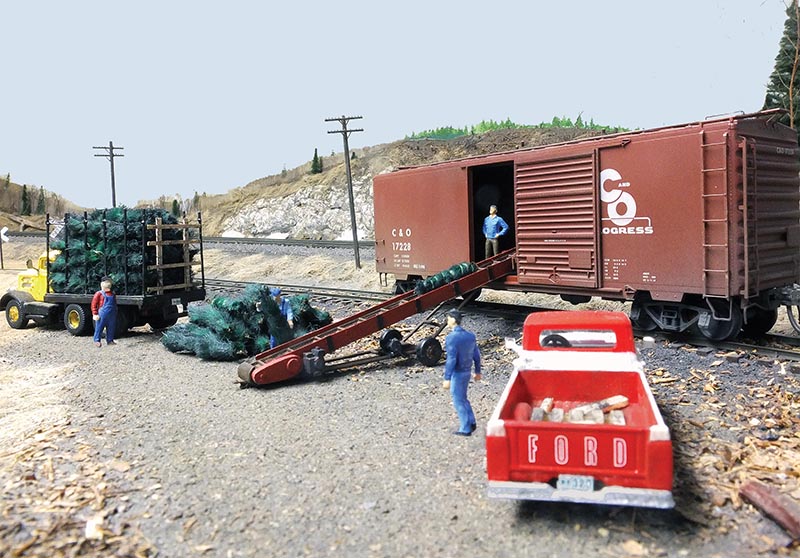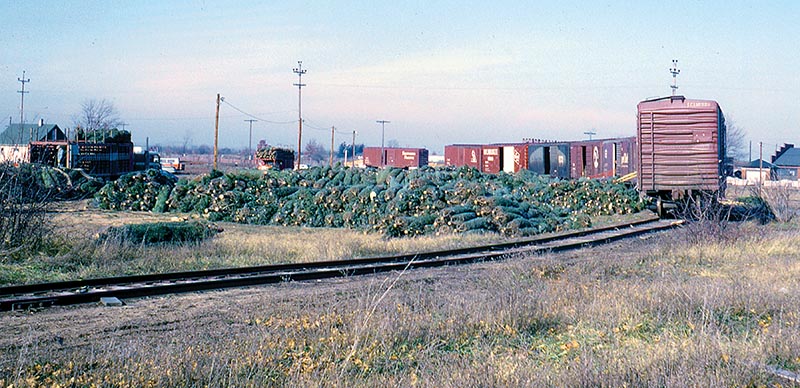 By Craig Wilson/photos as noted
By Craig Wilson/photos as noted
When the autumn air begins to chill and the leaves are changing colors, crews fan out across Northern states to begin an annual holiday ritual. The constant buzz of chainsaws signals the beginning of the Christmas tree harvest season. The sandy soils of northern Michigan are especially good for their growth, and tree farms dot the landscape.
By the beginning of October the trees have all been trimmed to shape. Portable sprayers are used to apply chemicals which seal the needles and prevent drying out as they travel to homes across the nation. This spray also gives the trees a darker green appearance as certain varieties are naturally a lighter yellow-green color.
At one time the annual tree harvest provided a steady uptick in business for the railroads in the months leading up to the holiday season. From a modeling standpoint this business is easily modeled on any layout, in any era.

ABOVE: In a scene straight out of 1959, workers load trees into a boxcar at Danhill, N.H., on Jack Ozanich’s HO scale Atlantic Great Eastern Railway. —Craig Wilson photo
Where I grew up in Cadillac, Mich., Marshall Brehm was a family friend who owned many tree farms in the area. In the 1970s I would travel home on college breaks and weekends to help with the harvest. At the farms the trees were cut and piled up in the aisleways. The trees were then run through a baling machine which folded the branches in toward the trunk. Older machines used baling twine but at this time they were being replaced with ones that employed nylon netting.
Every year Marshall would lease a plot of vacant land along the west leg of the Ann Arbor Railroad wye track at Selma Yard. A variety of older trucks and trailers brought the trees in from the tree farms where they were sorted into piles by tree variety and size. The “tree lot” was extremely simple. An old school bus that had been stripped of its seats acted as the “office” and break room. Gas-powered conveyor devices were used to send the trees up into the boxcars. Older ones looked like farm hay bale elevators while other, more lightweight, devices looked more purpose-built.
Just about any empty boxcar the railroad could get its hands on was used for loading. Since trees are not very heavy, 50-foot cars were preferred but 40-footers were used also (Photo 3). The photos accompanying this article show activity in the 1960s with a variety of boxcars lined up along the siding. By the time I was working there, fewer boxcars were loaded as the bulk of the traffic was shifted to open top semi-trailers but everything else at the tree lot was the same…



